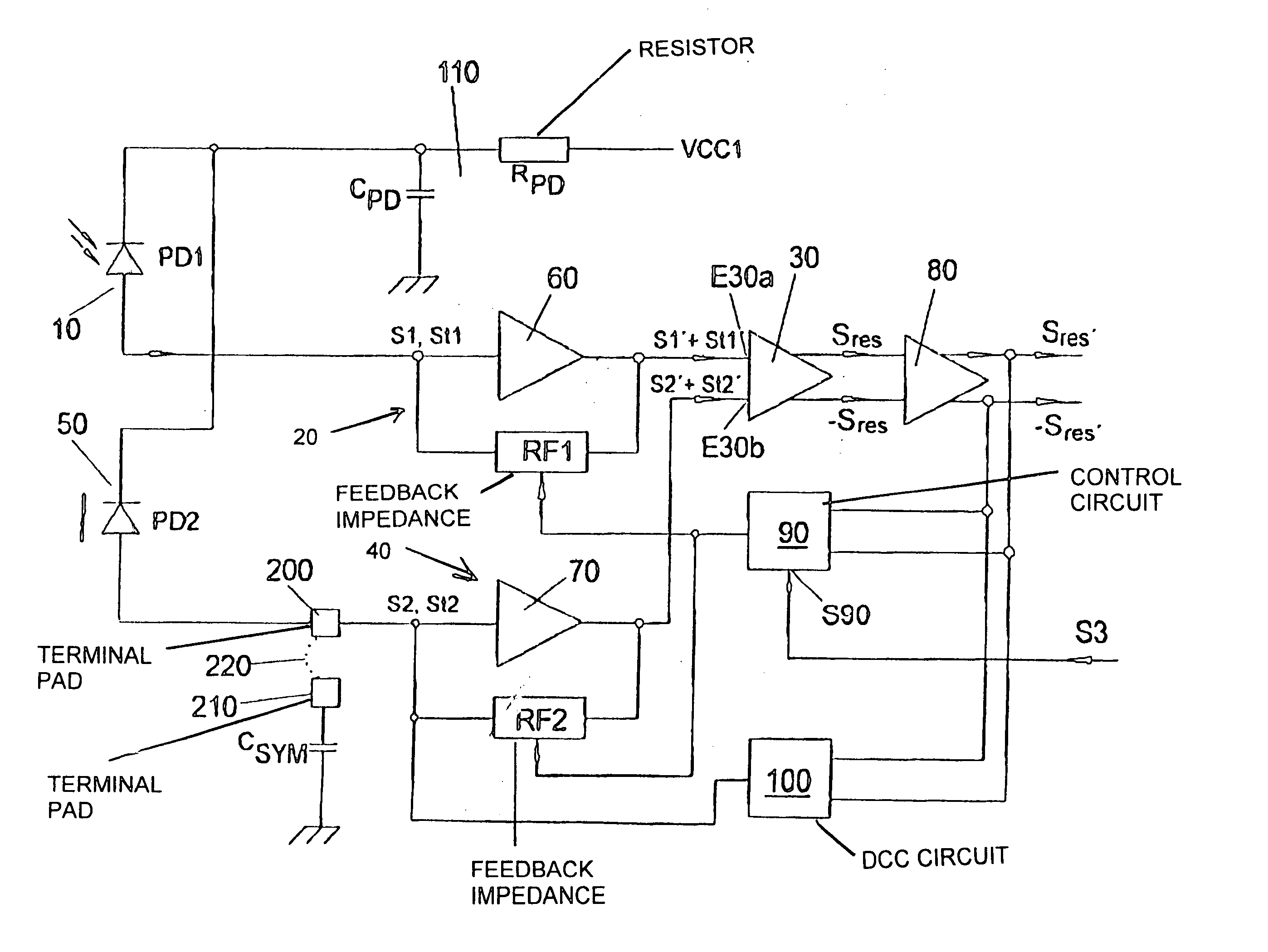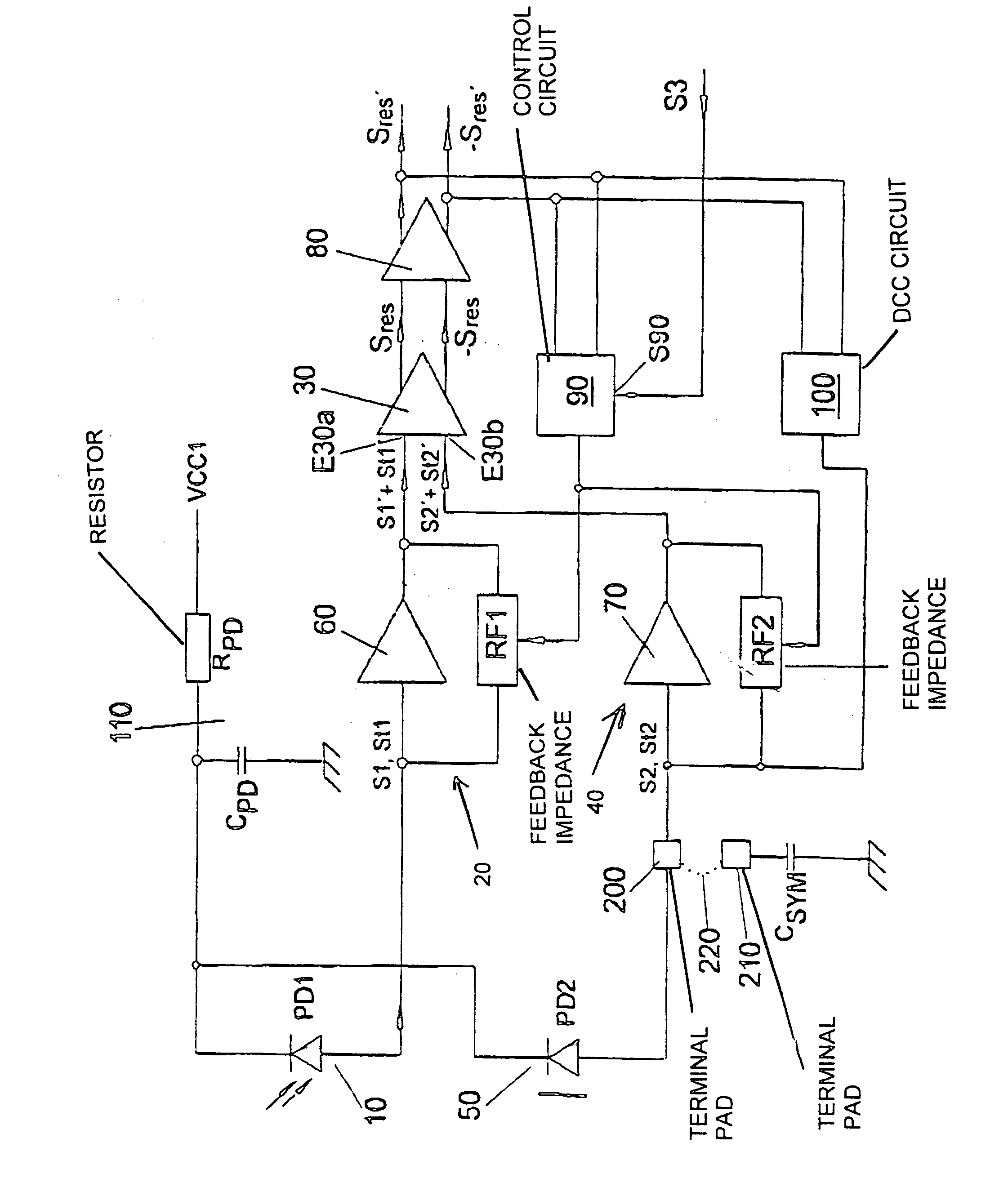Optical receiver circuit
a receiver circuit and optical receiver technology, applied in the direction of transmission, electromagnetic transmission, transmission monitoring, etc., can solve the problems of considerable interference, high cost of considerable additional costs in the production of previously known receiver circuits, so as to achieve high gain, high cost-effectiveness, and high gain
- Summary
- Abstract
- Description
- Claims
- Application Information
AI Technical Summary
Benefits of technology
Problems solved by technology
Method used
Image
Examples
Embodiment Construction
In order to elucidate the invention, a figure shows an exemplary embodiment of an optical receiver circuit according to the invention.
The figure reveals a photodiode 10 as reception device (“useful” reception device), which is connected to one terminal E30a of a differential amplifier 30 via a transimpedance amplifier 20. The other input E30b of the differential amplifier 30 is connected via a further preamplifier 40, embodied as a transimpedance amplifier, to a “dummy” photodiode 50 as “dummy” reception device which electrically simulates the electrical behavior of the reception device 10 in the illumination-free case.
The transimpedance amplifier 20 is formed by a voltage amplifier 60, for example an operational amplifier, which is connected up to a feedback impedance RF1. In a corresponding manner, the further transimpedance amplifier 40 is formed by a voltage amplifier, for example an operational amplifier 70 identical to the operational amplifier 60, which is connected up t...
PUM
 Login to View More
Login to View More Abstract
Description
Claims
Application Information
 Login to View More
Login to View More - R&D
- Intellectual Property
- Life Sciences
- Materials
- Tech Scout
- Unparalleled Data Quality
- Higher Quality Content
- 60% Fewer Hallucinations
Browse by: Latest US Patents, China's latest patents, Technical Efficacy Thesaurus, Application Domain, Technology Topic, Popular Technical Reports.
© 2025 PatSnap. All rights reserved.Legal|Privacy policy|Modern Slavery Act Transparency Statement|Sitemap|About US| Contact US: help@patsnap.com


